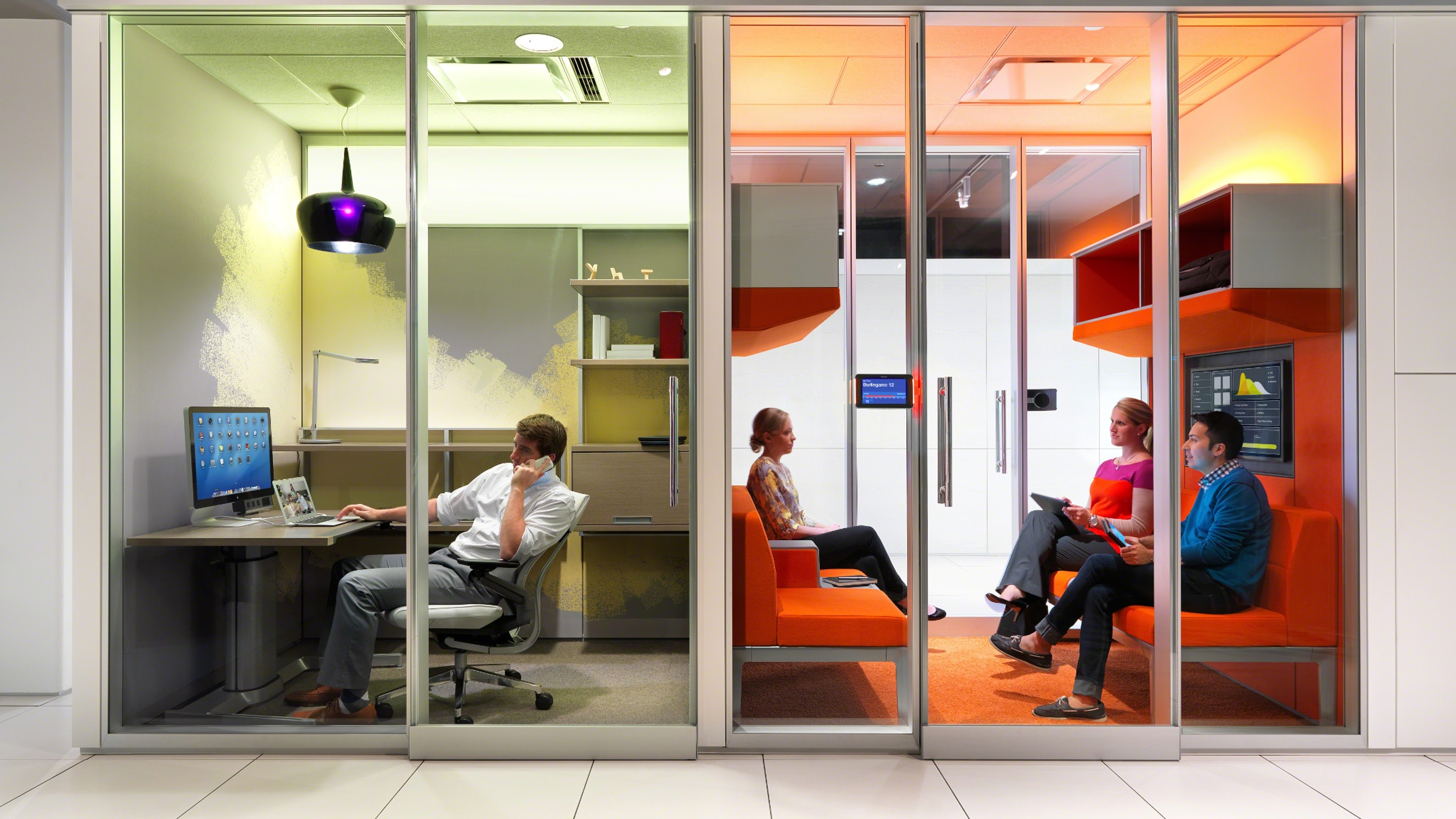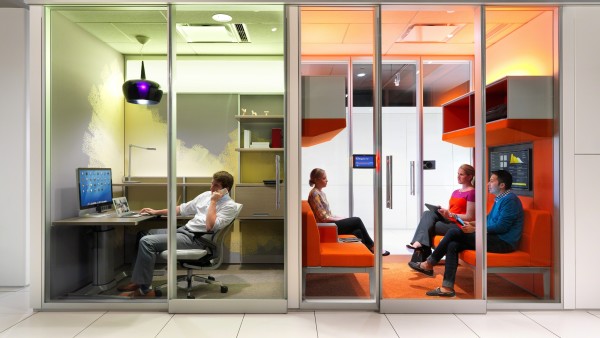Trends in the Connected Campus

In the past few years, many integrators have felt marginalized, experiencing the pinch from some clients choosing to bring aspects of “drag-and-drop” design and integration in-house. This issue is escalating in higher education—and then there are the diminishing margins with displays and hardware.

The future of projector sales compared to that of flat panels also is on the decline. The 2017 AV Industry Outlook and Trends Analysis (IOTA) report, produced by AVIXA in cooperation with IHS Markit, shows projector sales expected to dip through 2022. Though in higher-ed, projector sales may not drop off as precipitously as other vertical markets.
All that being said—there’s plenty of good news. “We expect both AV design and AV installation/integration to grow, particularly design,” said Brad Grimes, senior director of communications at AVIXA. “We’re looking at AV design growth of 10.4 percent between 2017 and 2022, and AV installation/integration growth of 3.4 percent over the same time.” AV installation/integration services currently make up about 12 percent of the total pro-AV market in the United States.
Growth Is in the Experience
Not surprisingly, streaming media, storage, and distribution (SMSD) platforms made up the largest product/service segment of the 2017 IOTA report. SMSDs generated $17 billion in 2016, and now account for more than 26 percent of the professional AV market. Corporate and higher-ed campuses are poised.
“Video in all its aspects continues to drive AV business into both markets, especially in higher education,” said Grimes. “In classrooms, students want to have the visual experience of learning or collaborating.”
Collaboration solutions are well established on the corporate campus, and this is where Grimes feels AV professionals play an absolutely critical role. It has become easy to spin up a collaboration platform over a network or the internet. “The experience at the end point is critical to making it work well,” Grimes noted, suggesting that people will always find new interfaces. “It’s really about the stuff that has never changed in the history of humanity… AV professionals understand the science of audio and video, and when it’s going to work well and when it’s not going to work well.”
A daily selection of the top stories for AV integrators, resellers and consultants. Sign up below.
Video on a much grander scale is maturing. Video walls that grace corporate and university lobbies that would display content from single media players are now on the network and becoming multipurpose displays. “We want to tie in several different kinds of sources from the university campus, so that they can be seen on these screens, so that tour guides can decide what they want to show off,” said Joe Bocchiaro, principal consultant at The Sextant Group. Internal departments are learning to work together and manage content across campus displays. “We have to think about all of the behind-the-scenes signal transport and where these things are coming from, and try to make it easy for the university personnel to switch what’s on different screens.”
Drag and Dropped? Not.
Most agree that room-to-room standardization of equipment, systems, and interfaces is optimal. Much to the chagrin of integrators, control companies have released a number of drag-and-drop configuration tools that can be utilized by clients.
Steve Greenblatt, CTS, of Control Concepts, explained the great caveat to DIY configuration: “The idea that something is configured doesn’t always mean that it doesn’t require expertise,” he said, pointing out the importance of an expert that can help identify what the client needs a system to do. “For simple, less complicated systems, easily configured is probably a better solution and could be a moneymaker for an integrator who needs to get systems done. Clients are happy with the outcome, because there’s more of a push to have simple solutions for simple systems.”
On the client side, a configured solution is becoming associated with the motto that there’s no programming required. “While that may be the case, what they’re really talking about is that you don’t have to write code,” Greenblatt added. “But it still requires somebody who knows how to program the system.”
Add Value
One of the greatest benefits to emerge from the converged AV/IT network is ability to collect and analyze data. Once you’ve begun to dive into the data, you’ll be happy you were able to save time configuring rooms. This is where integrators can really set themselves apart and add value. And we’re not talking lamp life here.
“The data becomes your strategic asset, and this can only happen once you start to collect the data,” said Bill Tinnel, senior vice president and chief commercial officer at Utelogy.
Collecting data starts with the equipment in the room, what’s being used, and quickly gets into complex data from every IoT device that can be connected. Occupancy sensors help determine not only room usage but can work with scheduling to report if a room is being used at capacity. Tinnel added, “This eventually leads to looking at business outcomes—how much real estate do I need and at what level of usage do I start to get nervous about not having enough space or the right kinds of spaces for employees.”
Open platforms and cloud-based services provide real-time data to make real-time decisions. “Nearly all of these opportunities have to do with the speed of doing business—a critical factor to gaining a competitive advantage among today’s ever-growing crowd of agile competitors,” Tinnel said. “Most service providers in this industry are not used to having this data, so while this is likely to be uncomfortable at first, it becomes a strategic advantage.”
Managed Services
AVI-SPL, a nearly $1 billion global design and integration company, is seizing the moment. “A big focus for this year is managed services, such as service-level agreements, maintenance agreements, and providing more onsite monitoring of components,” said Jeff Von Horn, sales and engineering manager of the Control Room Group at AVI-SPL. A lot of the monitoring on the service level is for the health of the system or predictive modeling to determine if components are marginal or may fail at some point. “That’s a service that we’ve grown internally. Right now, we have about a half a million IP addresses that are subscribed and we look to be adding that more frequently going forward.”
“The way we work has changed dramatically in the last five years as organizations use more and more collaboration applications,” added Utelogy’s Tinnel. “The faster that vendors can get a handle on pulling this data and learning from it, the bigger advantage they have in acting as a strategic partner and bringing real value to their clients. This kind of intelligence is what creates value and longer-term relationships with clients.”

Morphing Spaces
Furniture was historically left to the facilities and design departments, but the increased need for technology-embedded furniture means that AV specialists are being consulted on what options are available. “Smart furniture is not a new concept, but is certainly gaining traction in the AV space,” said Gina Sansivero, director of business development, Education, at AV/IT infrastructure solutions manufacturer FSR. “For technology integrators, offering smart furniture or furniture with embedded technology allows them to touch almost every piece of a learning/ conference environment for a truly unified space.”
Joe Bocchiaro, principal consultant at The Sextant Group, is seeing a trend in modular wall systems with integrated technology to accommodate changing floor plans. “It’s the newest infrastructure future-proofing where you say, ‘We don’t even know if we are going to want this room to be this big. Let’s put in modular walls, and then we can change that up without having to tear down the Sheetrock.’”

Cindy Davis is the brand and content director of AV Technology (AVT). She was a critical member of the AVT editorial team when the title won the “Best Media Brand” laurel in the 2018 SIIA Jesse H. Neal Awards. Davis moderates several monthly AV/IT roundtables and enjoys facilitating and engaging in deeper conversations about the complex topics shaping the ever-evolving AV/IT industry. She explores the ethos of collaboration, hybrid workplaces, experiential spaces, and artificial intelligence to share with readers. Previously, she developed the TechDecisions brand of content sites for EH Publishing, named one of the “10 Great Business Media Websites” by B2B Media Business magazine. For more than 25 years, Davis has developed and delivered multiplatform content for AV/IT B2B and consumer electronics B2C publications, associations, and companies. A lifelong New Englander, Davis makes time for coastal hikes with her husband, Gary, and their Vizsla rescue, Dixie, sailing on one of Gloucester’s great schooners and sampling local IPAs. Connect with her on LinkedIn.
